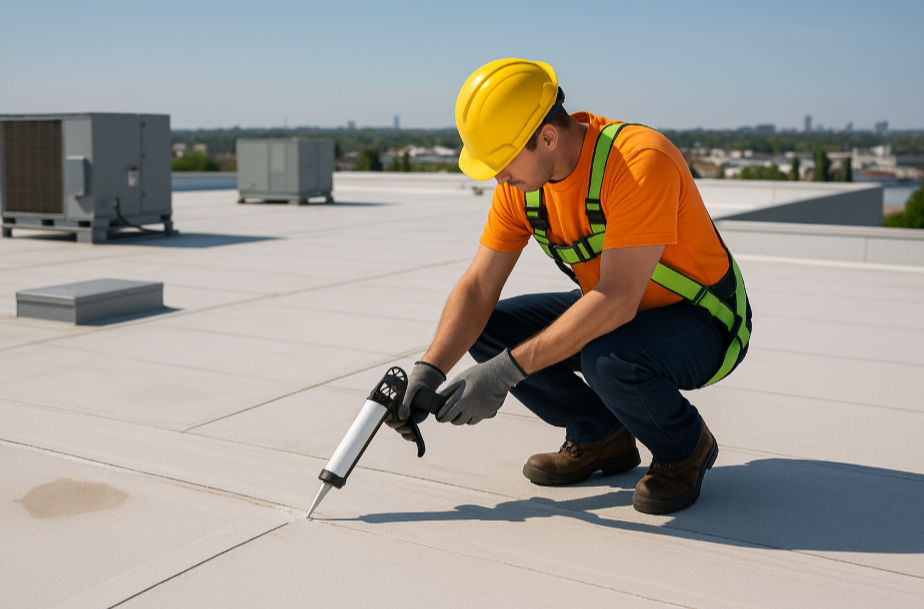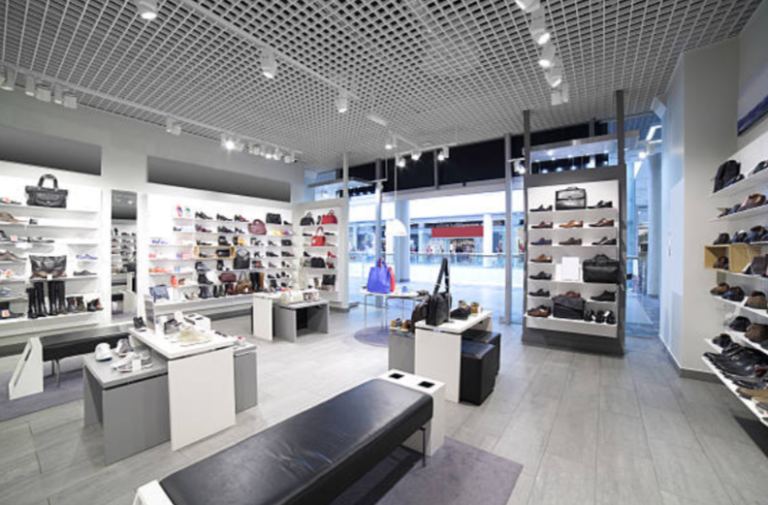How Commercial Roof Maintenance Saves Companies 30% Over the Roof’s Lifetime
A commercial roof is one of the most valuable assets on any business property, yet it’s also one of the most overlooked. Many building owners and facility managers fall into the trap of reactive maintenance—waiting until there’s a visible leak, interior damage, or structural issue before taking action. Unfortunately, this approach often leads to higher costs, unplanned downtime, and even early roof replacement.
The reality is that proactive roof maintenance is not just about keeping the building dry—it’s about protecting your investment and saving money over the long term. Studies and industry data consistently show that regular commercial roof maintenance can reduce lifetime roofing costs by up to 30%. Here’s how that savings adds up—and how your business can benefit from a smart maintenance strategy.
The Hidden Cost of a “Run-to-Failure” Mindset
What Happens When You Skip Maintenance?
When maintenance is deferred or ignored, minor issues like clogged drains, cracked membranes, or loose flashing can quickly evolve into significant problems. Left unaddressed, these seemingly small concerns allow moisture to seep into insulation, corrode structural elements, and damage the building’s interior. Once this happens, repairs become far more extensive—and expensive.
Unexpected roof failures often result in downtime, damage to inventory or equipment, and safety risks. In many cases, insurance may not fully cover the damages if routine maintenance hasn’t been documented, adding further financial burden.
How Routine Maintenance Extends Roof Life
Early Detection Prevents Costly Repairs
Regular inspections catch problems early—before they escalate into larger failures. Professional roofing contractors check for signs of deterioration, water intrusion, membrane damage, and blocked drainage systems. Fixing a minor seam split or patching a small puncture is exponentially cheaper than replacing entire roof sections due to water damage.
For example, scheduling a seasonal roof inspection tulsa ok allows local businesses to identify wear and tear from extreme weather and respond proactively, rather than dealing with emergency repairs after a storm.
Reducing Wear and Tear
Commercial roofs take a beating from temperature swings, UV exposure, rain, wind, and snow. Over time, this environmental stress causes materials to age faster. Maintenance efforts like resealing joints, cleaning gutters, and reinforcing vulnerable areas slow this aging process, helping your roof last closer to the top end of its lifespan estimate.
Financial Benefits of a Maintenance Plan
Lower Long-Term Costs
A well-maintained commercial roof typically lasts 20-30% longer than a neglected one. This translates directly into fewer replacements over the lifespan of the building. While the average commercial roof replacement can cost hundreds of thousands of dollars, stretching that timeline out by 5-10 years can significantly reduce total capital expenditures.
Moreover, regular maintenance makes budgeting easier. Small repairs are predictable and manageable compared to the sudden and substantial cost of emergency fixes or replacements.
Increased Energy Efficiency
A roof in poor condition often suffers from compromised insulation or air leaks, which affects the building’s HVAC performance. As a result, energy bills rise. A well-maintained roof retains heat and cooling more efficiently, reducing strain on your systems and helping lower monthly utility costs.
Maintenance practices such as sealing seams, reinforcing insulation, and checking penetrations ensure your roofing system performs as a true thermal barrier—especially in large warehouse or manufacturing environments.
Preventing Downtime and Disruption
Business Continuity Matters
Few things are more disruptive than closing operations to deal with a roof leak. For logistics centers, manufacturing plants, or retail buildings, even a short shutdown can cost thousands in lost revenue. Not to mention the potential damage to equipment, supplies, or inventory.
Proactive maintenance keeps your roof in optimal condition, reducing the risk of sudden failures and ensuring your business runs without interruption.
Protecting Tenant Relationships
If you lease your building to tenants, maintaining the roof is not just a matter of preserving your asset—it’s part of your service commitment. Frequent leaks or unaddressed damage can frustrate tenants and lead to disputes or early lease termination.
Bringing in a roof inspection tulsa ok provider regularly demonstrates due diligence and helps avoid tenant dissatisfaction caused by neglect-related roof issues.
Warranty Compliance and Insurance Advantages
Don’t Void That Warranty
Most commercial roofing systems come with a manufacturer’s warranty—but they often require documented maintenance to remain valid. Neglecting routine care may void the warranty, leaving you responsible for the full cost of repairs or replacement if something goes wrong.
Maintenance programs often include documentation that satisfies manufacturer requirements, keeping your warranty in good standing and safeguarding your financial interests.
Easier Insurance Claims
When roof damage is caused by weather events or other unforeseen circumstances, having maintenance records on hand strengthens your insurance claim. Insurers are more likely to approve payouts when you can demonstrate that the roof was properly cared for and damage was not the result of neglect.
A certified roof inspection tulsa ok contractor can provide detailed records and photos, which serve as valuable documentation for both insurance purposes and resale valuation.
Key Elements of a Strong Maintenance Plan
Scheduled Inspections
Inspections should be performed at least twice a year—typically in spring and fall—and after any major weather event. These checkups ensure that seasonal wear and potential storm damage are addressed promptly.
Routine Repairs and Cleaning
Removing debris, unclogging drains, repairing seams, and resealing flashing are simple but essential tasks that keep the roof performing well. A maintenance plan should include a schedule for these recurring jobs.
See Also: The Role of Tech in E-commerce Evolution
Clear Reporting and Action Plans
Professional contractors should provide detailed inspection reports, including photos, recommendations, and priority levels for each finding. This helps you stay organized, budget effectively, and prioritize work that delivers the best ROI.
Real-World Example: The 30% Savings Breakdown
Let’s say a commercial roof has a replacement cost of $300,000 and a base lifespan of 20 years. Without maintenance, early degradation may require replacement after 15 years—effectively costing $20,000 per year of use.
With routine maintenance costing approximately $5,000 annually and extending the lifespan to 25 years, your cost drops to $12,000 per year. That’s a 40% reduction in per-year cost—and about 30% in total savings over the roof’s lifetime when factoring in avoided repairs, improved energy efficiency, and operational continuity.
Conclusion
Commercial roof maintenance isn’t just a best practice—it’s a business strategy. By investing in proactive care, companies save significant money, extend the life of their roofing system, and protect the daily operations that drive their success. Whether you’re managing a single facility or an entire portfolio, the value of regular inspections and preventive service is clear.
Don’t wait for leaks to appear or for warranties to lapse. Make maintenance a priority—and watch the savings accumulate year after year.





